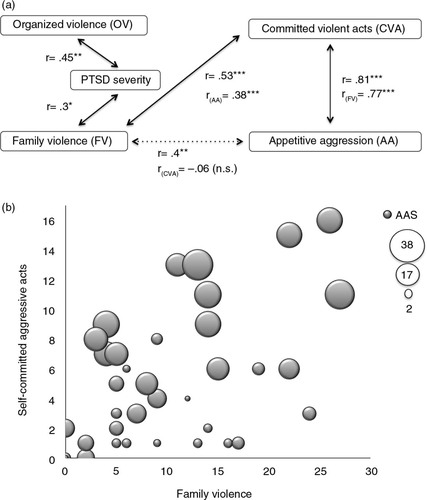Figures & data
Table 1 Descriptive statistics of the sample
Table 2 Percentages of different committed aggressive acts
Table 3 Sequential regression analysis predicting self-committed aggressive acts
Fig. 1 (a) Correlation coefficients between all variables were calculated. Only significant correlations are pictured (n.s.=not significant; r=Pearson's correlation coefficient; r (OV)=r (controlled for organized violence)=partial correlation coefficient; *p<0.05; **p<0.001; ***p<0.001). (b) A 3D-scattergram, showing that the number of committed violent acts increases with the amount of family violence experienced. It further demonstrates that appetitive aggression also increases. The magnitude of the appetitive aggression score is indicated by the size of the bubbles.

